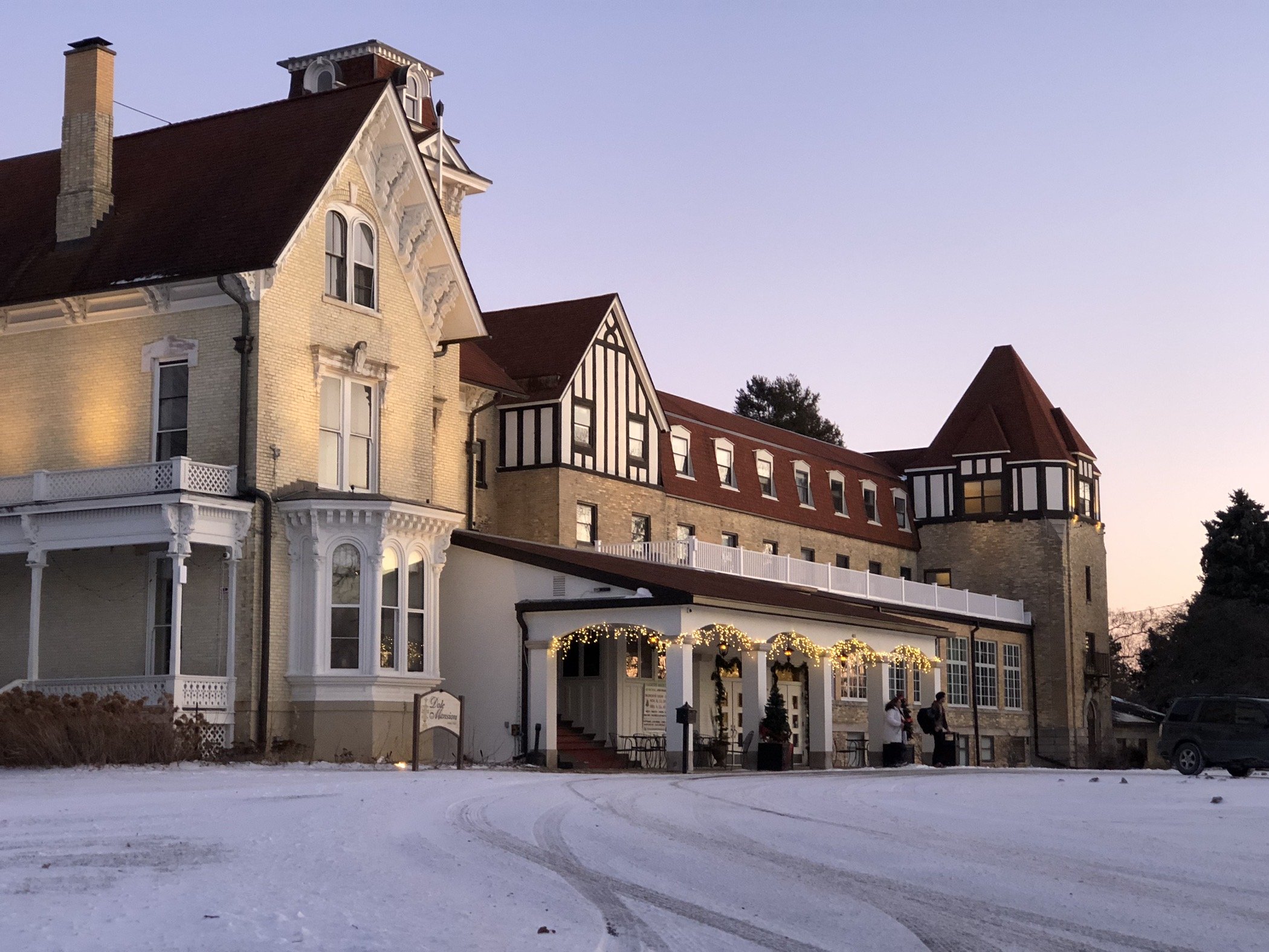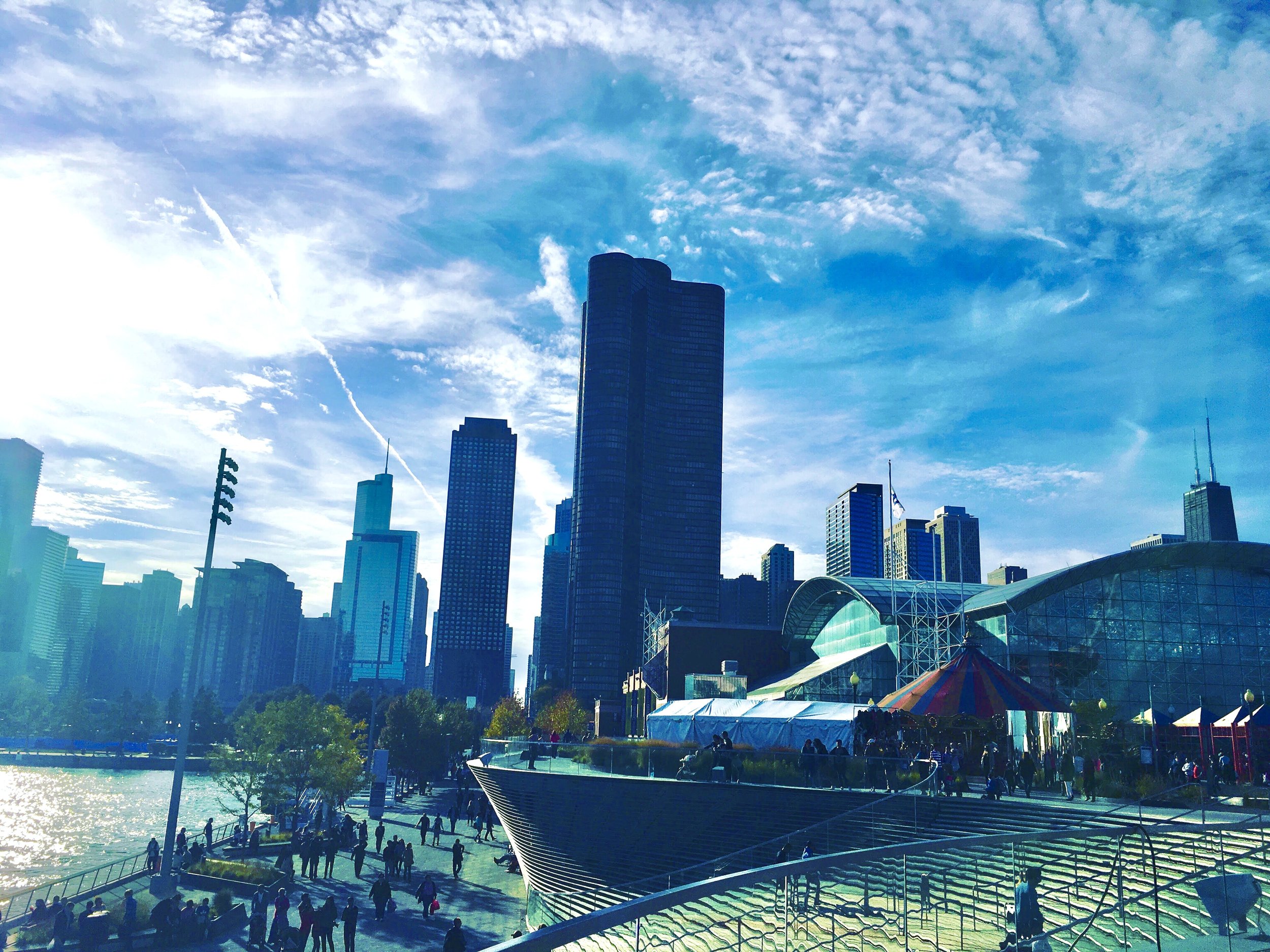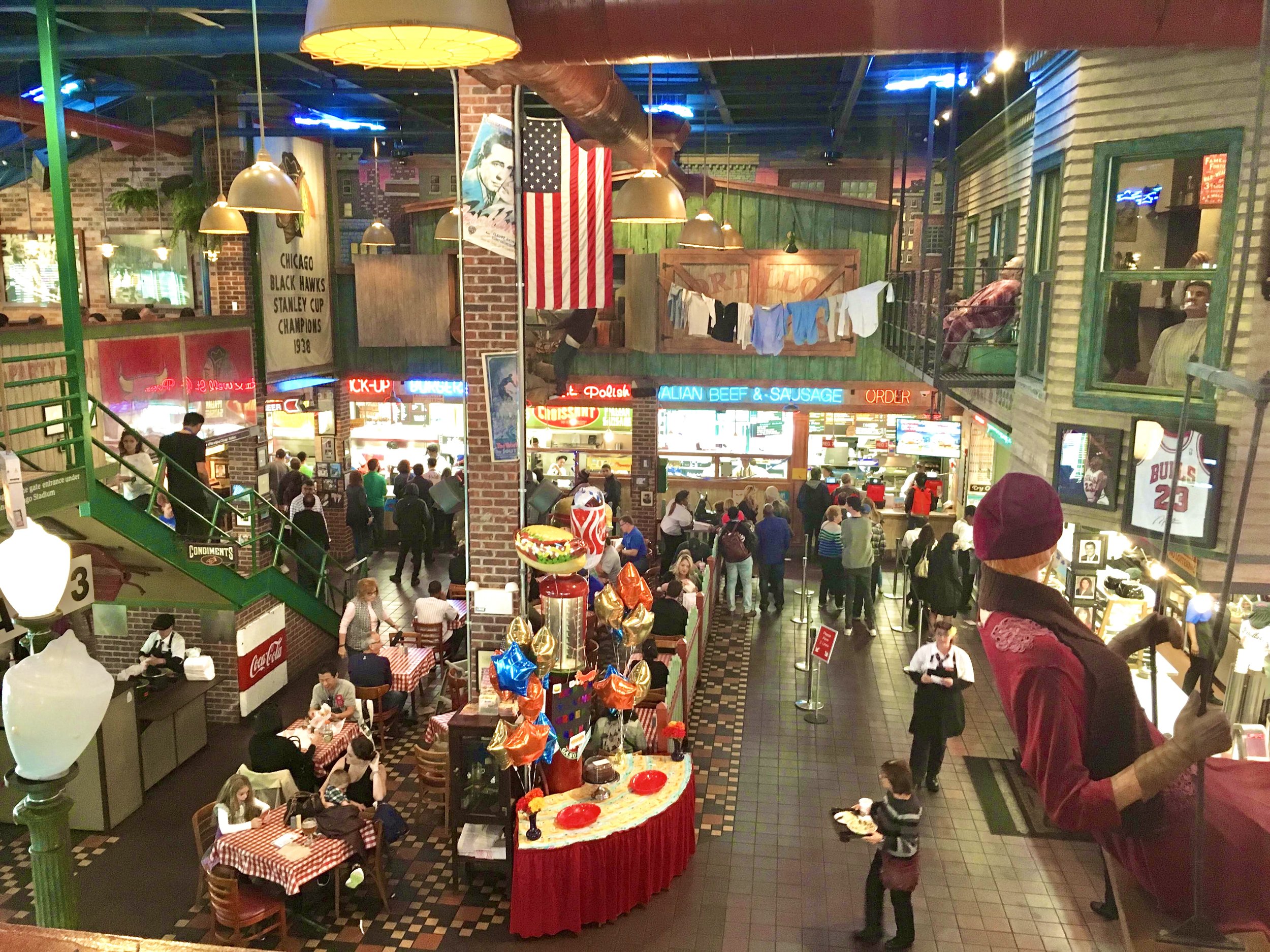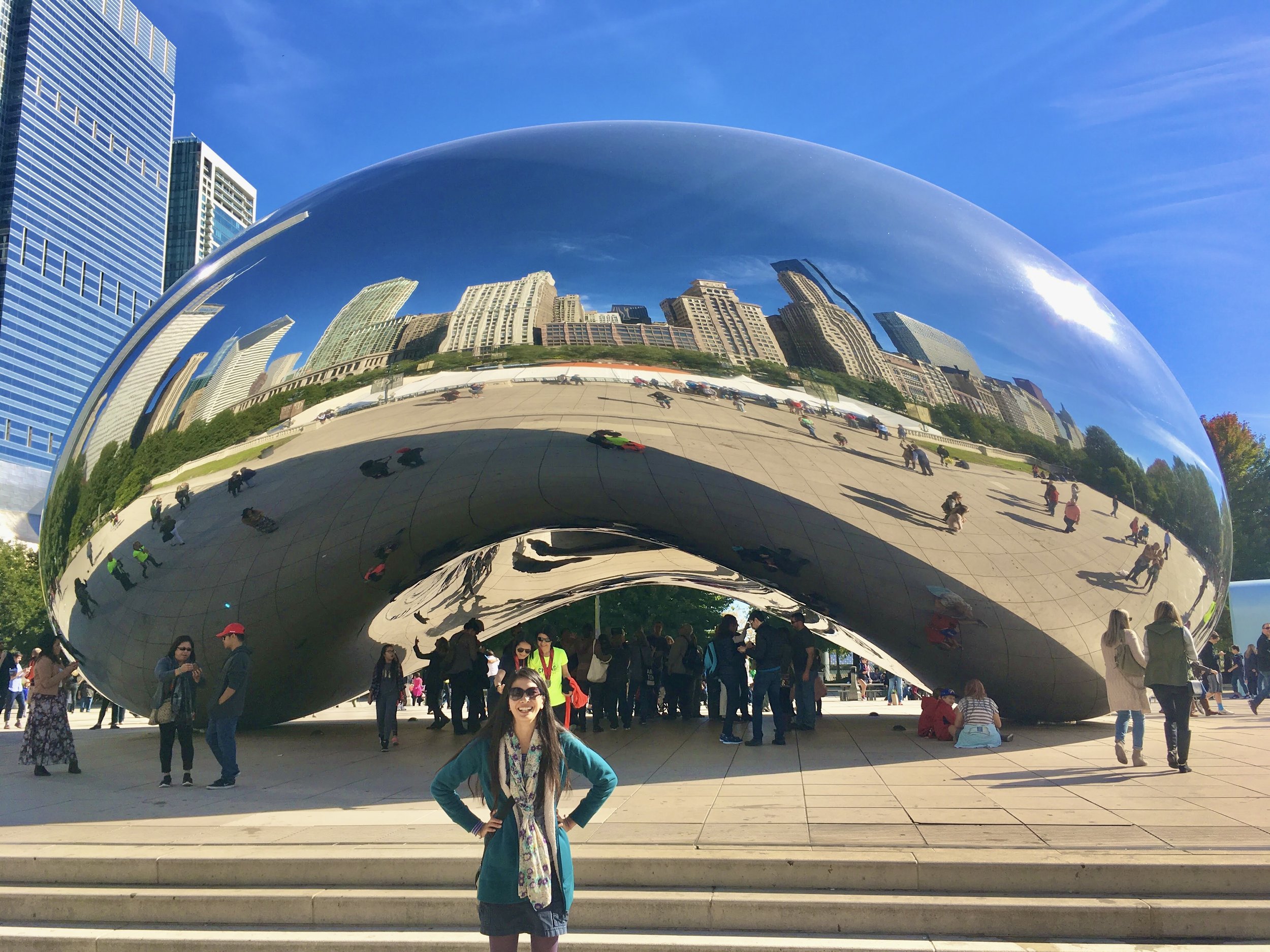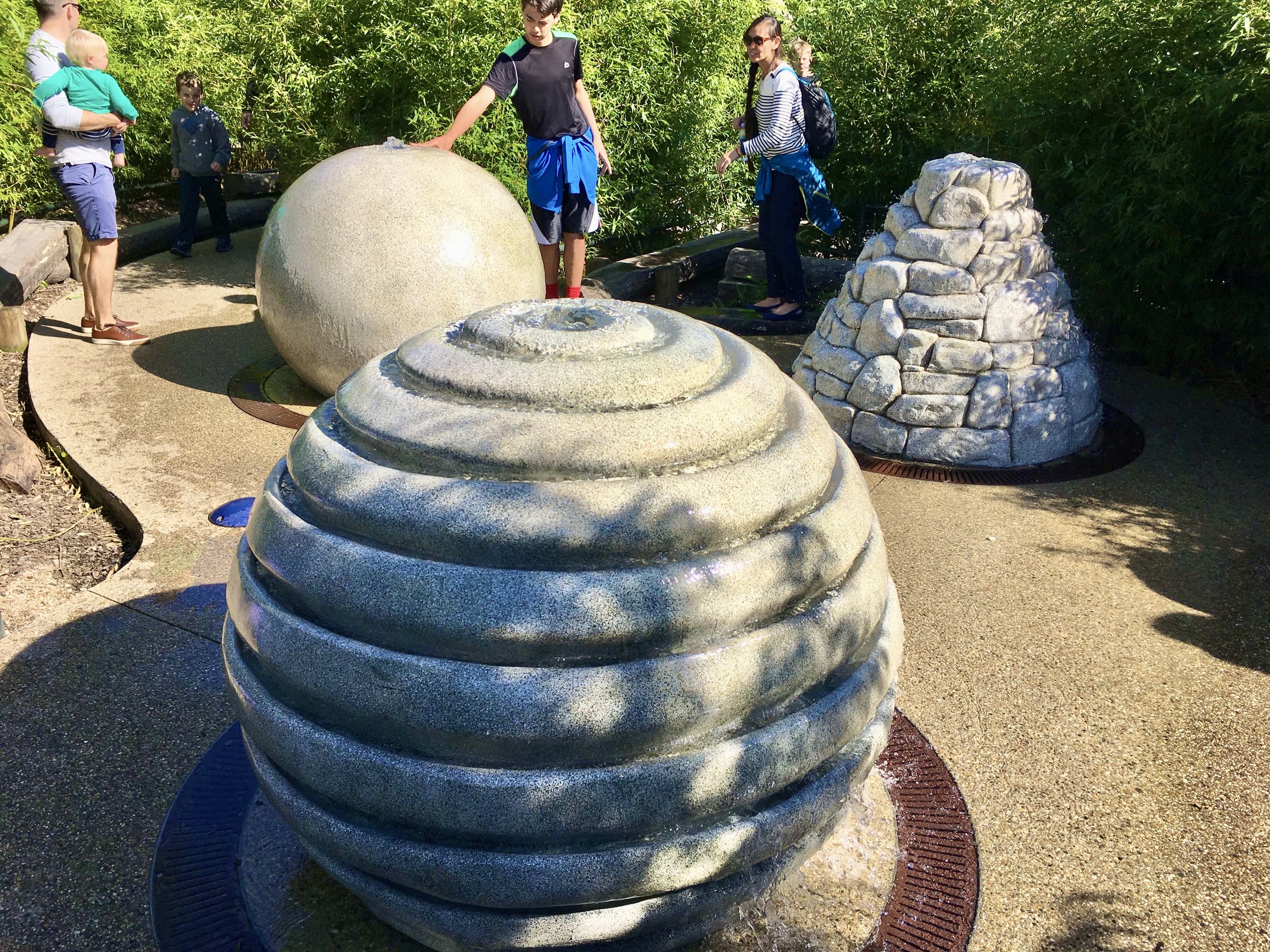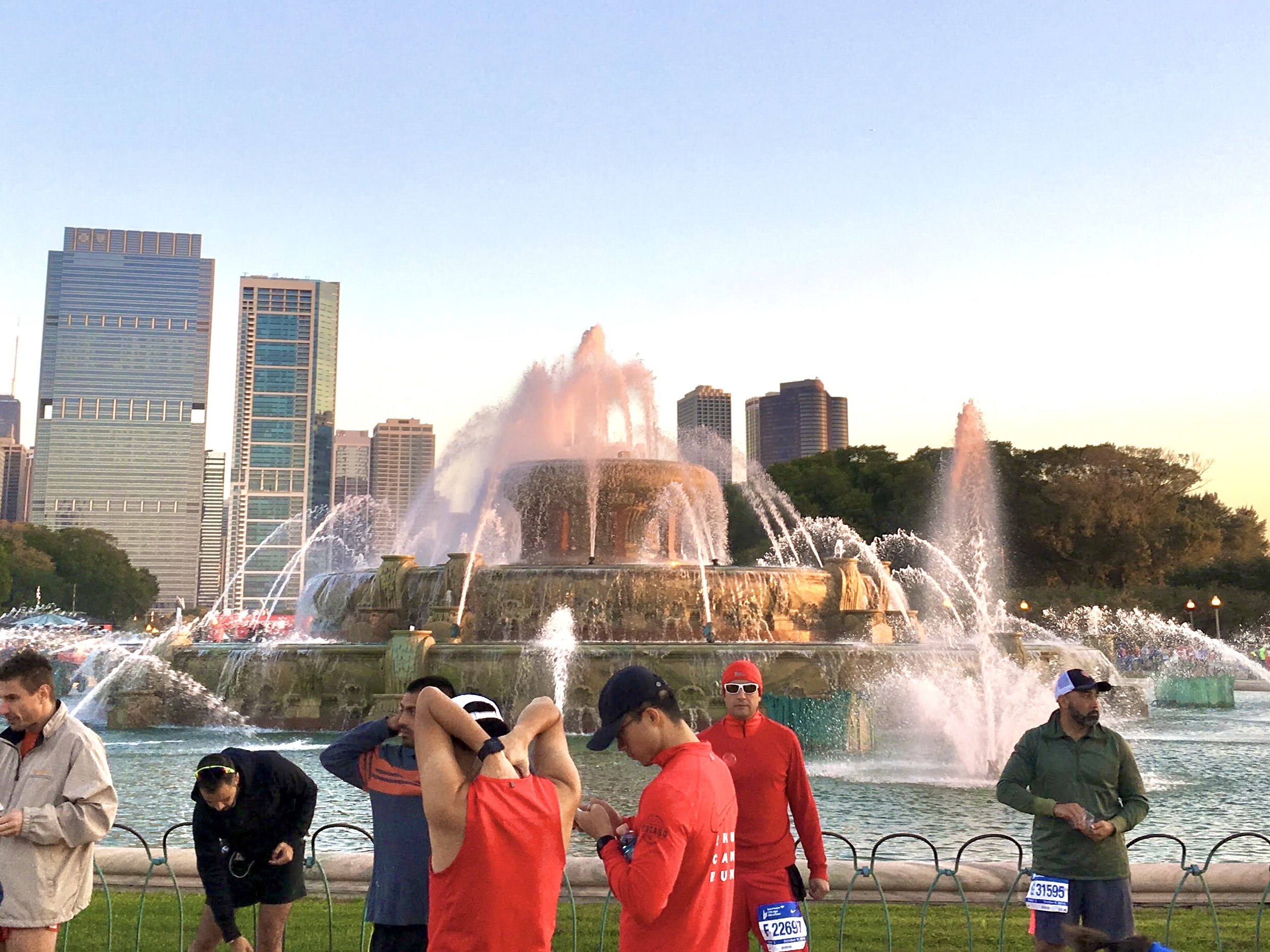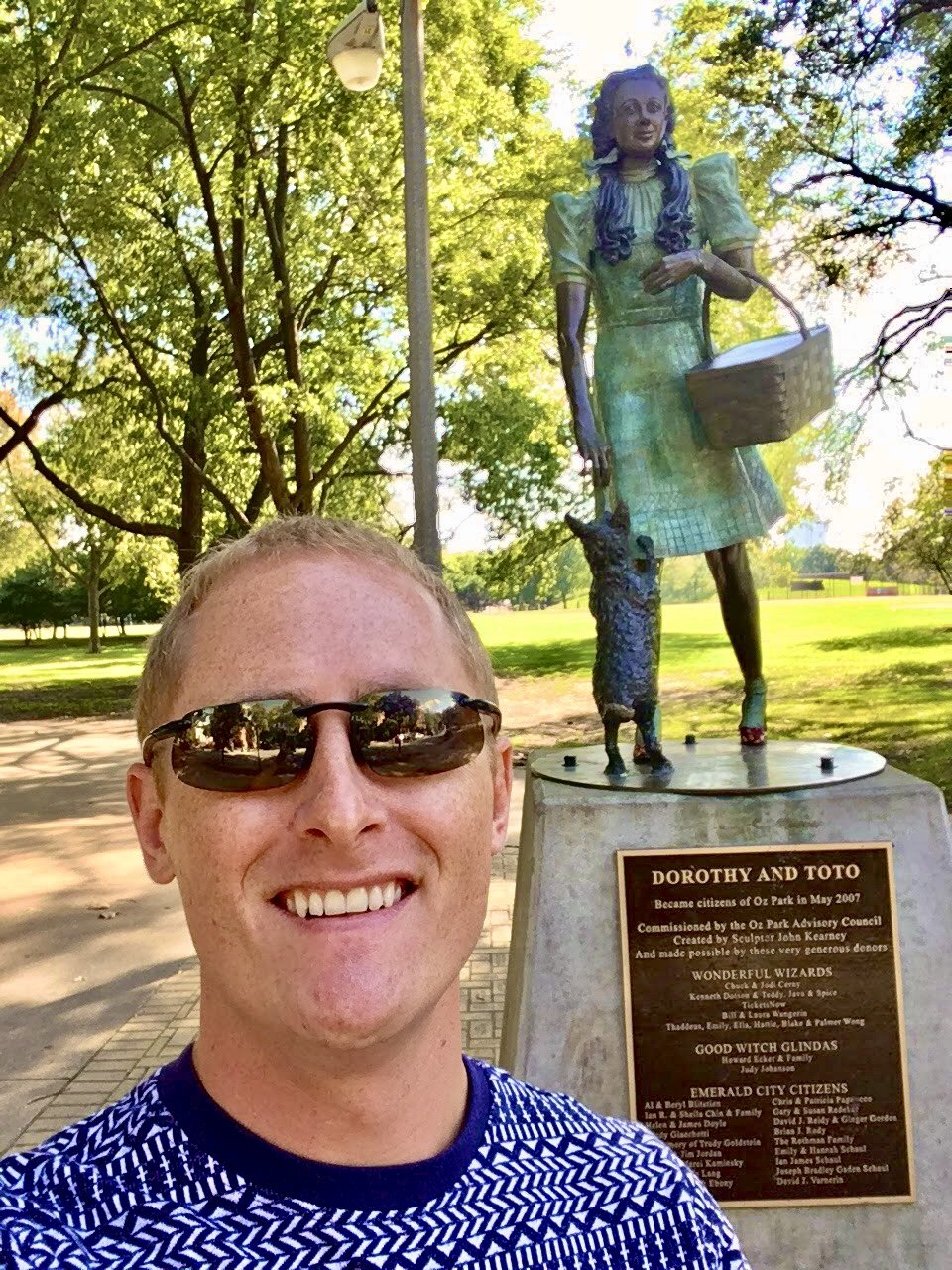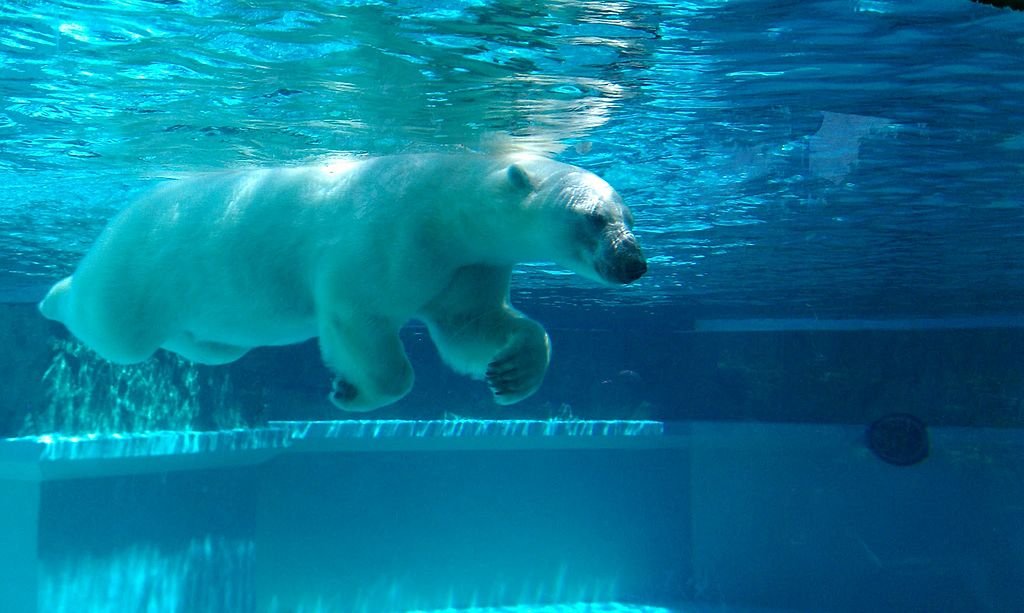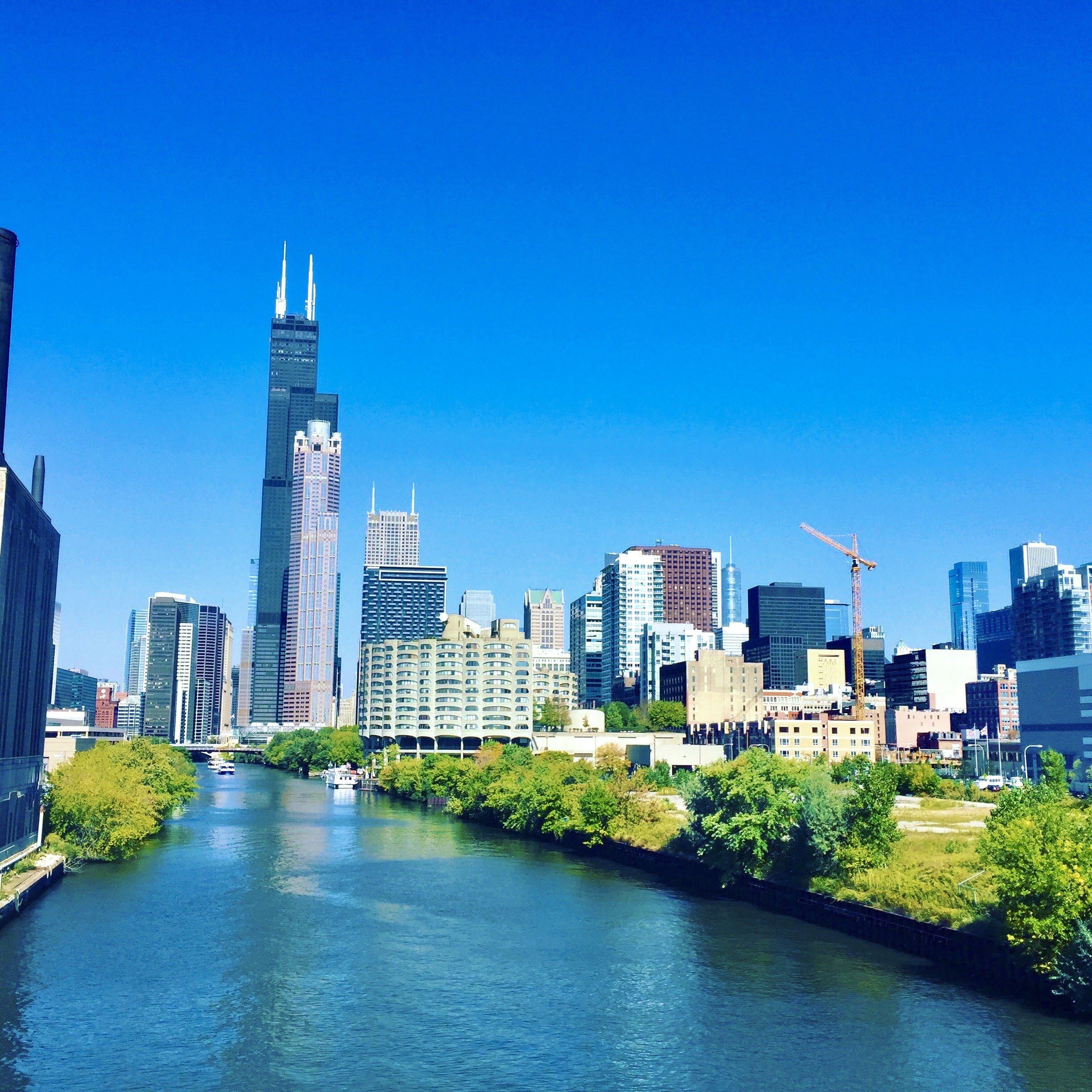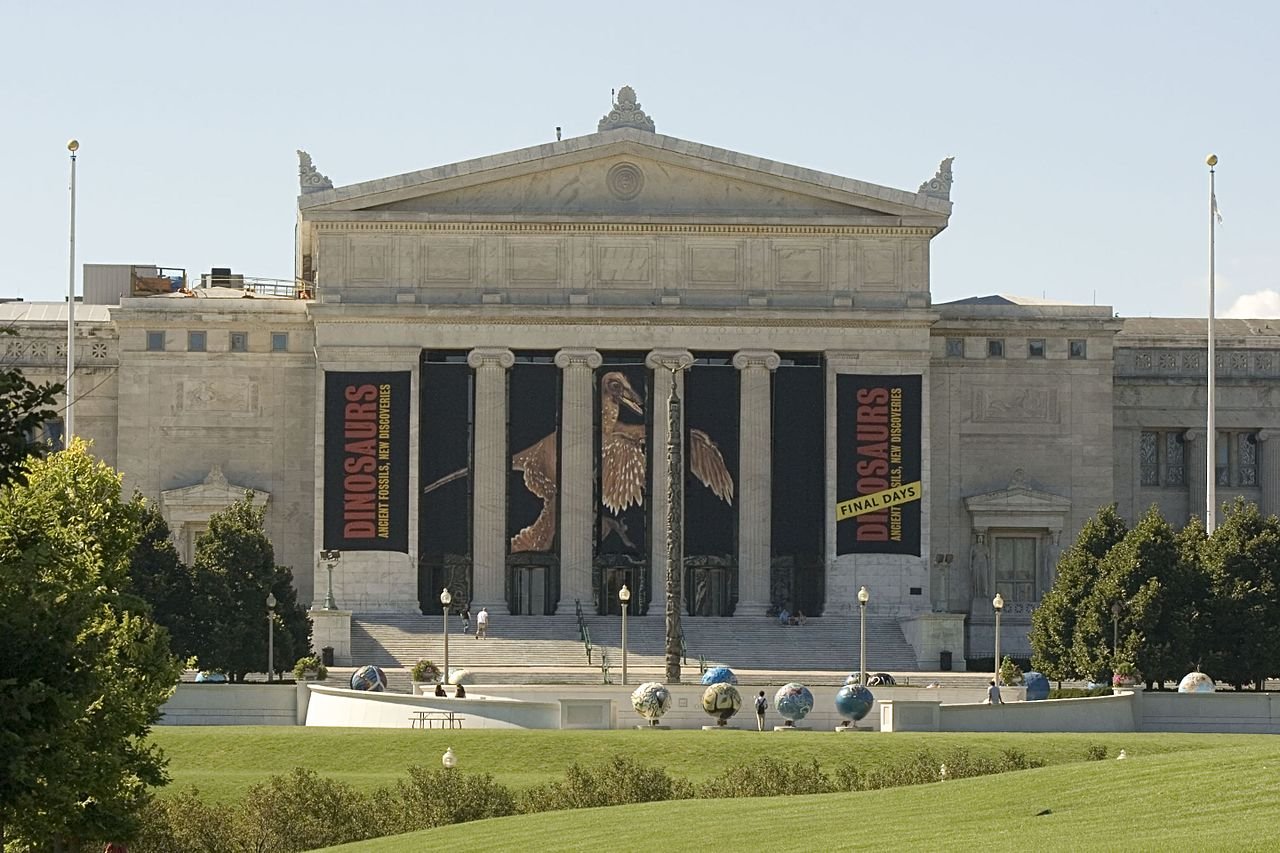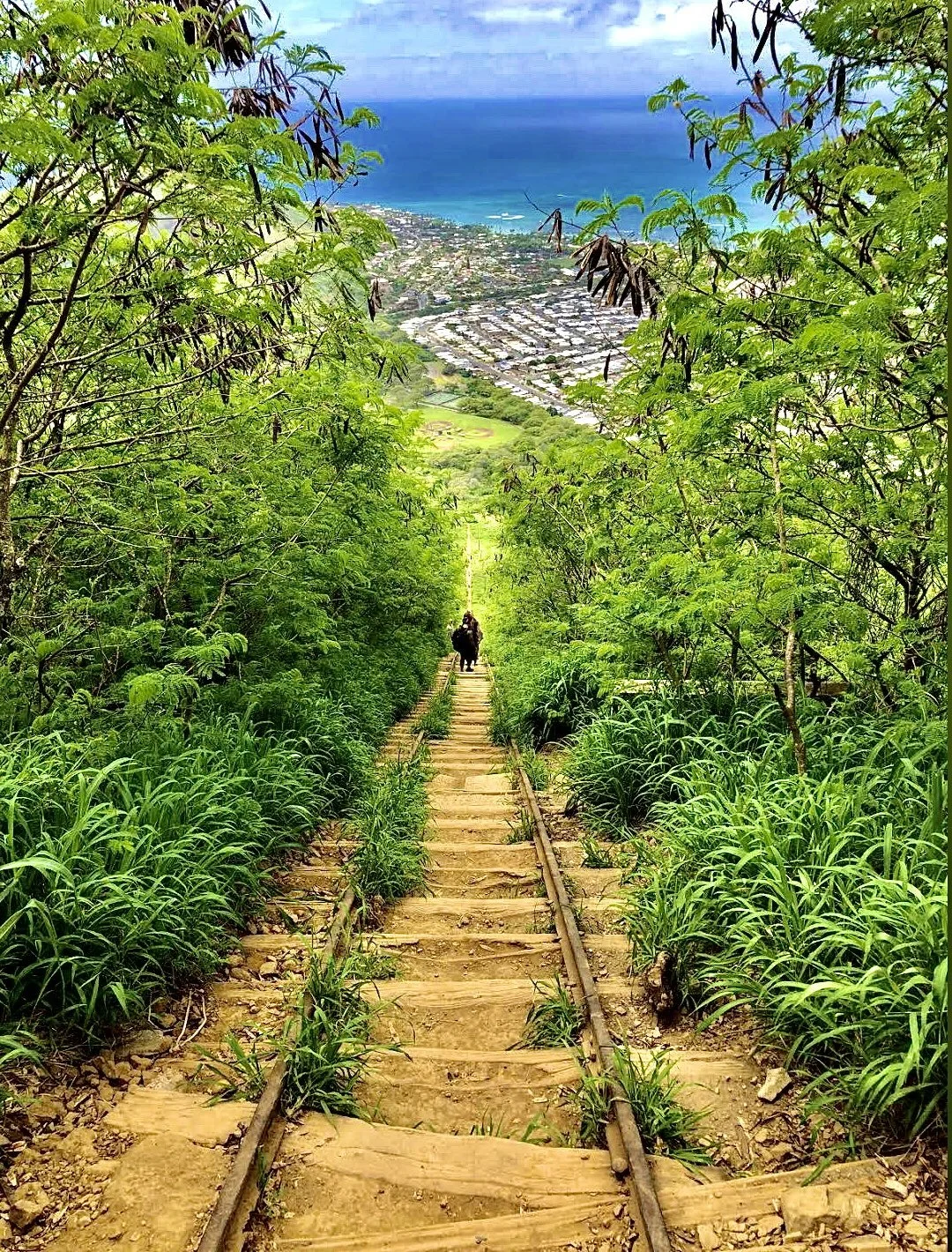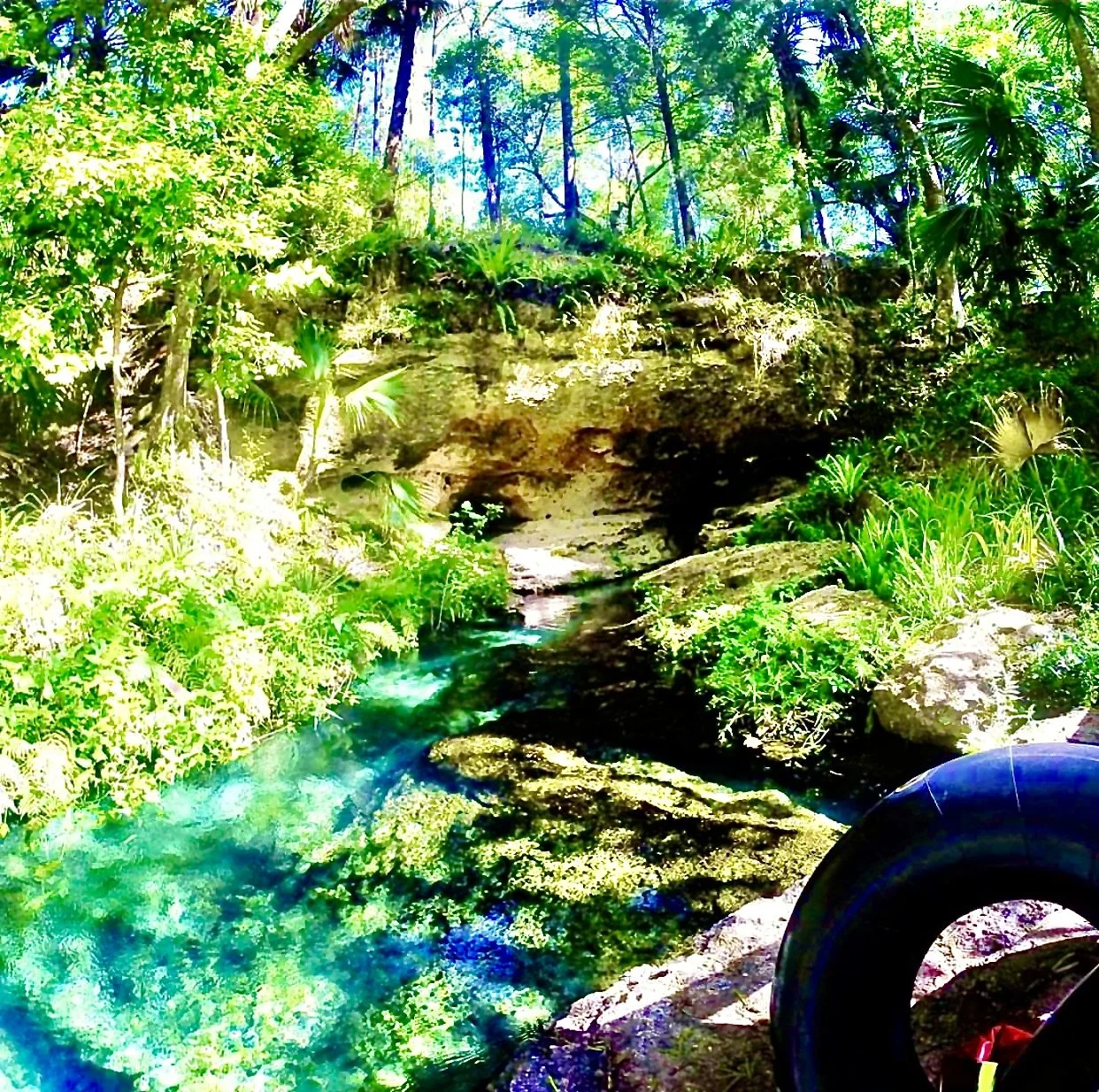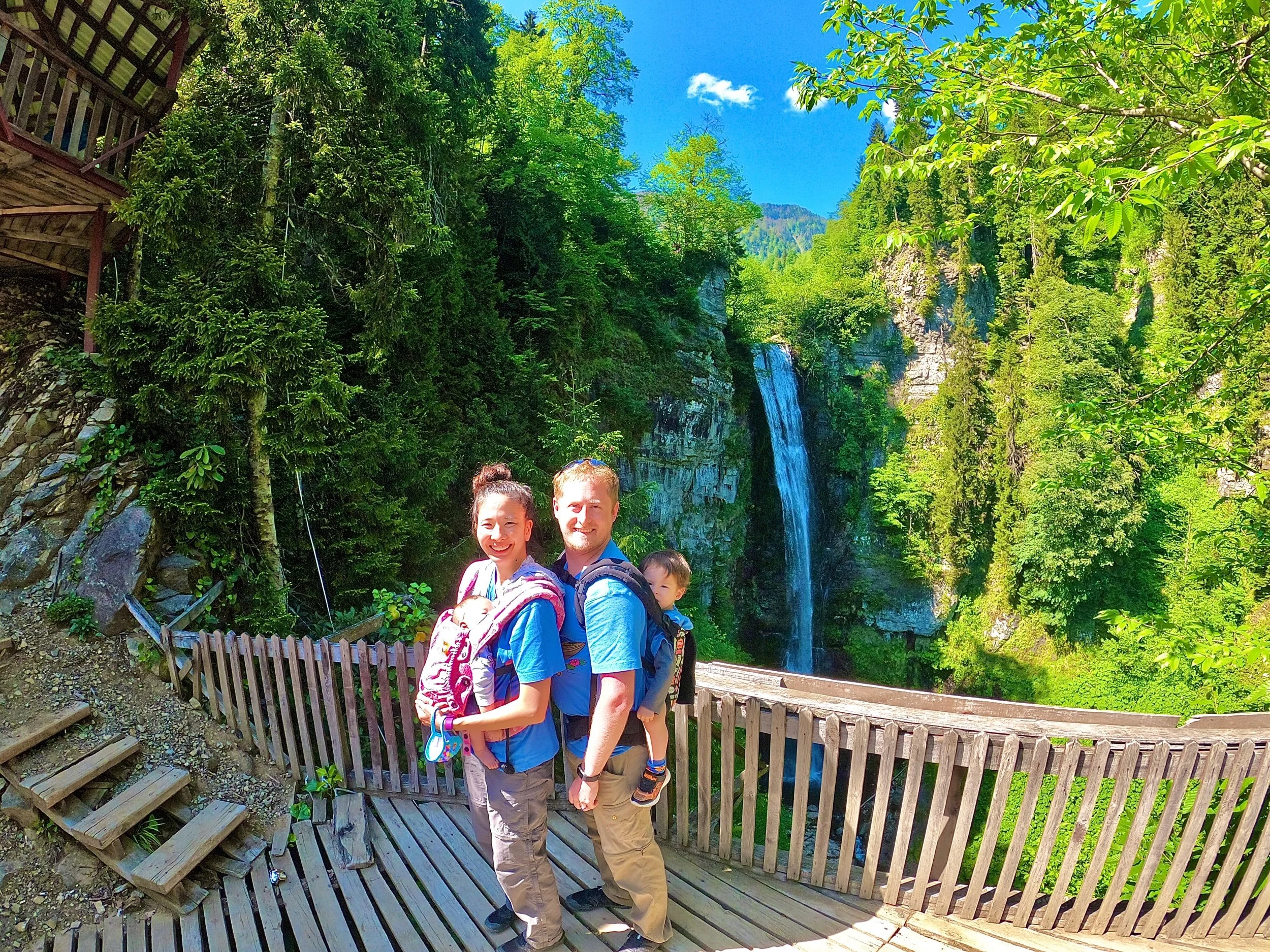Bucket List Chicago: Two Days in Chicago with Food, Culture and Hidden Gems
This article contains affiliate links. See our disclosure to learn more.
Navy Pier, Chicago. Photo by quinntheislander, CC0, via Wikimedia Commons
Destinations > North America > United States > Bucket List Chicago: Two Days in Chicago with Food, Culture and Hidden Gems
Bucket List Chicago: Two Days in Chicago
Let’s jump into our Bucket List: Chicago - a local’s favorite things to do with Two Days in Chicago. Bradley grew up near the city of Chicago and finally gets the chance to share with you what you should have on your list as you visit this amazing city.
Since its founding in 1837, Chicago has grown to the third most populous city in the United States today. Though it’s located in the Midwest region, it is still a port city, but the port is on Lake Michigan, one of the Great Lakes, rather than one of the coasts. Perhaps because of its rapid growth, the city has become a leader in urban development and architecture. Like many port cities, the population was not only quick-growing, but also diverse, becoming a new home to immigrants from all over. They brought with them their food, their music, and their culture, and those are all things that are valued and supported by the city today.
Learn more about this country, and its customs and culture, by reading the short Culture Smart! book today!
The Dole Mansion, Crystal Lake, Illinois.
Where to Stay in Chicago
To complete your Bucket List in Chicago, you’ll want to find a place on the north side of the city. That side of the city is also the safer side of Chicago, so it’s highly recommended that you pick a place in that area if you aren’t going into the west or northwest suburbs. See the map below for some of the better areas.
Navy Pier from the ground in Chicago, Illinois
Two Days in Chicago: Day 1
Navy Pier
One of the most popular sites in Chicago for visitors and locals alike is Navy Pier. Opened in 1919 as Municipal Pier, it was originally intended for a variety of purposes – commercial and passenger docks, as well as recreation and expositions. It was used by the military during both World Wars, and was renamed Navy Pier in 1927 to honor World War I veterans.
In addition to the iconic Ferris wheel and carousel, the 50-acre pier is home to parks, shops, restaurants, and exhibition halls. Make sure to check the events that are on while you visit, but even if you just go for the incredible views of the lake, it’s worth the stop.
Chicago Children’s Museum at Navy Pier
Chicago Children’s Museum
Now located at Navy Pier, Chicago Children's Museum was originally opened by the Junior League of Chicago in conjunction with several other local organizations in a space at the Public Library Chicago. They were inspired by a series of cuts to educational funding, and since that time the Museum has continued to expand to include arts programs, STEM experiments, imaginative play, and so much more.
It’s recommended to get your tickets online in advance, as staggered entry limits ticket numbers so there’s no guarantee that they’ll have tickets at the door for the time you want to visit.
Fourth Presbyterian Church located in the middle of skyscrapers in Chicago
Fourth Presbyterian Church
Another must see is the architectural gem that is the Fourth Presbyterian Church. Built in 1914 by Ralph Adams Cram, America’s leading Gothic Revival architect, it is a beautiful example of what he saw as the best of both the French and English Gothic styles. The parish buildings were designed in the Tudor style at the same time and provide a charming contrast to the elaborate details of the church itself.
The Fourth Presbyterian Church is host to a free weekly concert series every Friday at noon, just one of the many art events it supports. Enjoy the lovely music in an atmosphere of beauty that matches the sound.
The John Hancock Building stands over other skyscrapers in Chicago. View from Navy Pier.
John Hancock Center
Across Michigan Avenue from the church, John Hancock Center, officially renamed 875 North Michigan Avenue, is a 100-story skyscraper which was the tallest building in the city when it was built and remains the fifth tallest.
The observation deck on the 94th floor provides incredible 360° views of the city and the surrounding area- on clear days you can see up to four states, and even boasts a full bar. On the 95th and 96th floors the Signature Room and Signature Lounge with great food and views to match.
All Portillo’s restaurants are themed in Chicago
Portillo’s Hot Dogs
How you eat your hot dog can be a divisive topic, but one of the most popular ways to go is a Chicago-style dog. Portillo's Hot Dogs specializes in the Chicago dogs, as well as other local specialties. Even though a Chicago-style hot dog is an all-beef hotdog on a poppy seed bun with a bunch of toppings that make it a “Chicago” – yellow mustard, chopped white onion, bright green sweet pickle relish, a dill pickle spear, tomato slices, pickled short peppers, and topped off with sprinkle of celery salt, it now also comes in the “Garden Dog” variety - which is entirely plant-based!
There are several other variations as well, but Chicagoans agree that a key element is that this style doesn’t have ketchup on it. Portillo’s, opened by Dick Portillo in the 1960s, has grown to a franchise with locations in several states. If the Chicago-style hotdog is not something that whets your appetite, their menu has other local favorites as well, including their famous roast beef sandwiches.
Find Chicago’s famous Italian roast beef sandwiches in vegan form throughout the Chicagoland area at Buona - we recommend them with mild giardiniera.
Find other famous Chicago-style foods in vegan form at “Liberation Kitchen” in West Town.
The Bean at Millennium Park in Chicago
Two Days in Chicago: Day 2
Millennium Park
Another of Chicago’s attractions that’s really several attractions rolled into one is Millennium Park. Opened in 2004 to celebrate the third millennium, the park is home to one of the most iconic images of Chicago – the Cloud Gate statue’s shiny surface is more commonly known as The Bean due to its shape, and picture next to the three-story sculpture is almost mandatory on a visit to the city.
The park is also home to multiple performance venues and art exhibitions and installments. The Lurie Garden is a sunny oasis that unites the natural and the urban in a beautiful way.
Fountains at Maggie Daley Park in Chicago
Maggie Daley Park
Connected to Millennium Park by the BP Pedestrian Bridge, Maggie Daley Park is another of Chicago’s great public spaces.
It features beautiful landscaping in and around the Play Garden with its interactive spaces for children to play, a field house, climbing walls, and an ice-skating ribbon that is great for walking or roller skating in the summer months. The garden dedicated to cancer survivors in the older section of the park is especially lovely and touching.
Runners prepare for the Chicago Marathon in front of Buckingham Fountain
Buckingham Fountain
Both Millennium and Maggie Daley Parks are part of the larger Grant Park, which is also home to another of Chicago’s landmarks, Buckingham Fountain. Located near the center of the park, the fountain was modeled after one at the Palace of Versailles in the rococo style.
The fountain is beautifully lit and has regular water shows throughout the day and light shows in the evenings from mid-April to mid-October, depending on temperatures. During the holiday season, the fountain features festival lights. Features of the fountain represent lake Michigan and the four states surrounding it.
The Chicago River turns green for St. Patrick's Day. Photo by Natasha Jelezkina, CC BY-SA 2.0, via Flickr.
Chicago River
The Chicago River is one of the key factors in the city’s economic success and growth. Actually a system of natural rivers and canals, Chicago River creates a link from the Great Lakes to the Mississippi River Basin and eventually the Gulf of Mexico, providing a through line for commerce.
Because of its link to industry, the river has been affected by pollution, and though there have been concerted efforts to clean it up in recent years, it’s still a concern. Despite this, it’s very popular for fishing and even host to annual fishing events.
The sight of river dyed green every March to celebrate St. Patrick’s Day is always impressive.
Dorothy and Toto Statue at Oz Park in Chicago
Oz Park
Oz Park, located in the Lincoln Park neighborhood, is a must see for fans of the Wizard of Oz. The park is named for the yearly festival the fans of the Oz books had in that location to celebrate the works of the Chicago native L. Frank Baum, who authored the stories.
The city planned the park improvements around this popular and locally meaningful festival, and raised money to install sculptures of the characters from the book, including the Tin Man, the Lion, the Scarecrow, and Dorothy and Toto. The park is also a venue for outdoor film screenings during the summer months.
A polar bear swims at Lincoln Park Zoo in Chicago. Photo by Cmadler, CC BY-SA 3.0, via Wikimedia Commons
Two Days in Chicago Extended: Days 3+
Lincoln Park Zoo
Started in 1868 with a gift of two swans from New York’s Central Park, Lincoln Park Zoo has grown to a home for nearly 200 distinct species form all over the world, including the critically endangered eastern black rhinoceros and Jamaican iguanas that had been thought to have been extinct.
One of the country’s only free zoos, the facilities are now dedicated to conservation, education, and science, as well as the enjoyment derived from viewing the animals. Educational programs as well as gift shops and dining options balance out the restful beauty of the gardens and the animal exhibits.
Wrigley Field, home of the Chicago Cubs baseball team
Wrigley Field
Another iconic Chicago landmark is Wrigley Field, which was built in 1914 and is one of the oldest and most recognized Major League Baseball parks in the country. The now-familiar Art Deco marquee was added in 1934, and the historic hand-turned scoreboard is still used at games today.
The park underwent significant renovations from 2014 to 2018, but in order to keep the National Historic Landmark status, the historic character of the building was preserved. Whether or not you’re a baseball fan, the ivy-covered walls of this stadium are a piece of history that is fundamental to both Chicago and to the national pastime.
Sears Tower as viewed from the Chicago River
Sears Tower (Willis Tower)
At 1450 feet tall and with 108 stories, Sears Tower is the third tallest building in the US and 23rd in the world. Built in the early 1970s by Sears, Robuck & Co., an ambitious project that the company never really lived up to. Purchased by the Willis Group in 2009, it is now officially named the “Willis Tower,” however most people in Chicago still know it by its original name of “Sears Tower.”
The Skydeck, an observation deck on the 103rd floor opened in 1974. In 2009, retractable glass boxes were added to the Skydeck that extend out over the edge of the building, allowing visitors to look directly down at the city. If you’ve got a head for heights, this is definitely not something to miss out on. Tickets are $30-$44, so if you’re considering multiple Chicago attractions you may want to check out the CityPass, which gives you access to 5 attractions and is valid for 9 days.
The Field Museum at Museum Campus in Chicago. Photo by Kelly Martin, CC BY-SA 3.0, via Wikimedia Commons
Museum Campus
Easily an entire day all by itself is Museum Campus. For lovers of the natural sciences, a visit to Museum Campus will need to be on the agenda. This 57-acre museum park is home to the Shedd Aquarium, the Adler Planetarium, and the Field Museum of Natural History all on the shores of Lake Michigan.
The Shedd Aquarium has more than 32,000 aquatic creatures and features interactive exhibits.
The Adler Planetarium has state-of-the-art theatres and hands on stations where science can be experienced first-hand.
The Field Museum features a variety of exhibits ranging over the course of life and culture on Earth, including “SUE the T. Rex”, the largest Tyrannosaurus rex specimen ever discovered.
Chicago-style deep dish pizza
Gino’s East Pizza
A trip to Chicago would not be complete without a Chicago-style deep-dish pizza, and Gino's East Pizza is some of the best in Chicago. Assembled “upside-down,” with its thick cornmeal-tinted crust, an abundant amount of stringy mozzarella cheese, and then topped with generous amounts of sweet and chunky oregano-infused marinara sauce, it’s definitely worth a try. Feel free to add fresh veggies, or the most popular topping in Chicago, Italian sausage.
Founded in 1966 as the second-oldest deep-dish spot in Chicago, and located a block off the Magnificent Mile, Gino’s East provides a fun atmosphere added to by the fact that the walls are covered with the graffiti and messages from past diners – there is a history literally on the walls. The company has expanded to locations throughout the region, and in 2015 they also opened a brewing company as the perfect accompaniment to their pizza.
While the original home of the Chicago deep-dish is credited to Pizzeria Uno, there is a bit of debate around whether an employee there - by the name of “Rudy” Malnati - created the famous pizza. “Malnati” is currently considered the oldest family name in Chicago pizza. Rudy later opened up his own restaurant in 1971 with his son, Lou, and formed their signature pie, The Malnati Chicago Classic. Learn more about the history of Chicago deep-dish pizza here.
In addition to Gino’s East, Pizzeria Uno, and Lou Malnati’s, other top locations to try a Chicago deep-dish pizza are Giordano's, Pequod's Pizza, and Burt's Place. We recommend trying a vegan Chicago deep-dish pizza at “My Pi Pizza” in Bucktown or “Kitchen 17” in Avondale.
Country Donuts in Crystal Lake, a northwest suburb of Chicago
Two Days in Chicago - Bonus Highlights
Country Donuts
While a little bit of a drive outside of Chicago, this Crystal Lake donut location has the best donuts that we’ve found anywhere on the planet - and we’ve been to quite a lot of countries! Country Donuts is a locally owned and operated business that was started in 1976. They also have a second location in Elgin, Illinois, which is slightly closer to Chicago.
It is easy to say that any local will know about these donuts, and they’ll agree that it’s the best place in town to find great donuts and coffee!
While out in this area it might also be worth checking out a few of the historical sites, like the Dole Mansion and the Col. Gustavus A. Palmer House which are both only a couple miles away. Crystal Lake Brewing, the Illinois Railway Museum, the Woodstock Square Historic District - where ”Groundhog Day” starring Bill Murray was filmed, the Claussen Pickle Factory, and Three Oaks Recreation Area are other amazing places to visit in this area.
Our friend Steve enjoys a beer flight at Pig Minds Brewery in Rockford
Pig Minds Brewery
Located a bit further northwest from Chicago, in Rockford, this place was the worst. It had amazing beers and extremely delicious vegan-only food. Even though we stopped just to hang out with a couple of friends, we ended up eating and drinking way more than we wanted to and were completely disappointed that we couldn’t stay longer.
We started out with their 10-beer sampler, which was a fantastic price considering how many flavor-packed great-tasting beers we got to try. Added to our escalating beer-tasting adventure was the giant monster “big as your head” pretzel - which tasted like a true Bavarian pretzel, the Buffalo cauliflower wings - which were better than any version that we ever attempted to cook ourselves, and a mouth-watering seasonal treat - the Eggnog Muffin! All of these options were fantastic during our beer consumption but lacked completely in the “endless” department.
Unfortunately, we added on the sizable burger deluxe and Nashville hot chickin’ sandwich at the end of our journey of beer, both of which sadly disappeared so quickly that we almost don’t remember eating them - apart from the lingering taste of pure “amazing.” They were just too delicious. Highly not-recommended if you’re looking for a plain-Jane spot where you don’t lose your focus constantly on how great everything tastes.
Jenny at Navy Pier in Chicago
Visiting Chicagoland
The Midwest is called America’s heartland, and at the heart of that is Chicago. With a rough and ready history of rapid commercial growth and political scandals and reforms, the history of the city reflects the history of the nation. Comforting food and fascinating culture that is representative of the diverse immigrant population continue to create an atmosphere that is fun no matter when you visit. There is so much to see and do in the city, but these are some of the highlights that you really don’t want to miss – until next time!
Bradley running the Chicago Marathon
Thank you VERY much for reading our article. We actually created this website to help people reach financial independence. Did you know that by having a remote job and traveling endlessly, or living in a country that has low costs of living, you can actually reach retirement quicker? Plus, retirement abroad is up to 75 percent cheaper as well! Learn more by exploring our website.
See our Thank You page to sign up for our free weekly newsletter - you’ll receive only 1 email per week letting you know about our latest travel articles, remote-work life, and amazingly affordable destinations!
Found this post useful? Buy us a coffee to help support this site’s running costs OR share this article with a friend.
FAQs
How much does it cost to visit the attractions and landmarks mentioned in the article?
The cost of visiting the attractions and landmarks in Chicagoland varies depending on the type, location, and season of the visit. Some attractions, such as Lincoln Park Zoo and Millennium Park, are free to enter, while others, such as the Art Institute of Chicago and the Skydeck Chicago, charge admission fees. According to one source, the average cost of visiting a museum in Chicago is $30 per person, while the average cost of visiting an observation deck is $44 per person. However, there are also ways to save money by purchasing city passes, online tickets, or group discounts. Additionally, some attractions and landmarks offer special deals or free days for Illinois residents, students, seniors, or military personnel.
What are the best times of the year to visit Chicagoland and avoid crowds or bad weather?
The best times to visit Chicagoland are April through May and between September and October, when the temperatures are warm, a variety of festivals take place, and crowds are manageable. I explain it as “late-Spring or early-Autumn” to people we meet. Summer marks Chicago's peak tourist and festival season, with travelers from around the country hoping to take advantage of the warm weather and abundant activities. However, summer can also be extremely hot, humid, and crowded, with higher prices for hotels and flights. Winter can be very cold, windy, and snowy, but also offers lower rates, fewer tourists, and festive events. However, winter weather can be unpredictable and affect travel plans. Therefore, spring and fall are generally the best seasons to enjoy Chicagoland without compromising on comfort or budget.
What are some of the local cuisines or specialties that one should try while in Chicagoland?
Chicagoland is known for its diverse and delicious food scene, with influences from various cultures and regions. Some of the local cuisines or specialties that one should try while in Chicagoland are:
- Deep-dish pizza: A thick crust pizza with cheese, toppings, and tomato sauce, baked in a deep pan. One of the most famous Chicago dishes, deep-dish pizza can be found at many pizzerias, such as Lou Malnati's, Giordano's, and Pequod's.
- Chicago-style hot dog: A beef frankfurter on a poppy seed bun, topped with yellow mustard, chopped white onions, bright green sweet pickle relish, a dill pickle spear, tomato slices or wedges, pickled sport peppers, and a dash of celery salt. A Chicago-style hot dog is never served with ketchup, and can be found at many hot dog stands, such as Portillo's, Superdawg, and Gene & Jude's.
- Italian beef sandwich: Thin slices of roasted beef, simmered and served au jus on a long Italian-style roll. The sandwich can be ordered "wet" (dipped in the gravy), "sweet" (topped with roasted green bell peppers), or "hot" (topped with giardiniera, a spicy pickled vegetable relish). The Italian beef sandwich is a Chicago original and can be found at places like Al's Italian Beef, Mr. Beef, and Buona.
- Popcorn: A snack made from popped kernels of corn, coated with various flavors, such as cheese, caramel, butter, or salt. Chicago is famous for its popcorn, especially the Chicago mix, which combines cheese and caramel popcorn. Some of the best places to get popcorn in Chicago are Garrett Popcorn Shops, Nuts on Clark, and Kernel's Gourmet Popcorn.
- Chicken Vesuvio: A dish of chicken pieces and wedges of potato, sautéed with garlic, oregano, white wine, and olive oil, and baked until crisp. Chicken Vesuvio is a classic Chicago dish, with origins in the city's Italian-American community. Some of the restaurants that serve chicken Vesuvio are Harry Caray's, The Village, and Club Lago.
Learn more about this country, and its customs and culture, by reading the short Culture Smart! book today!



